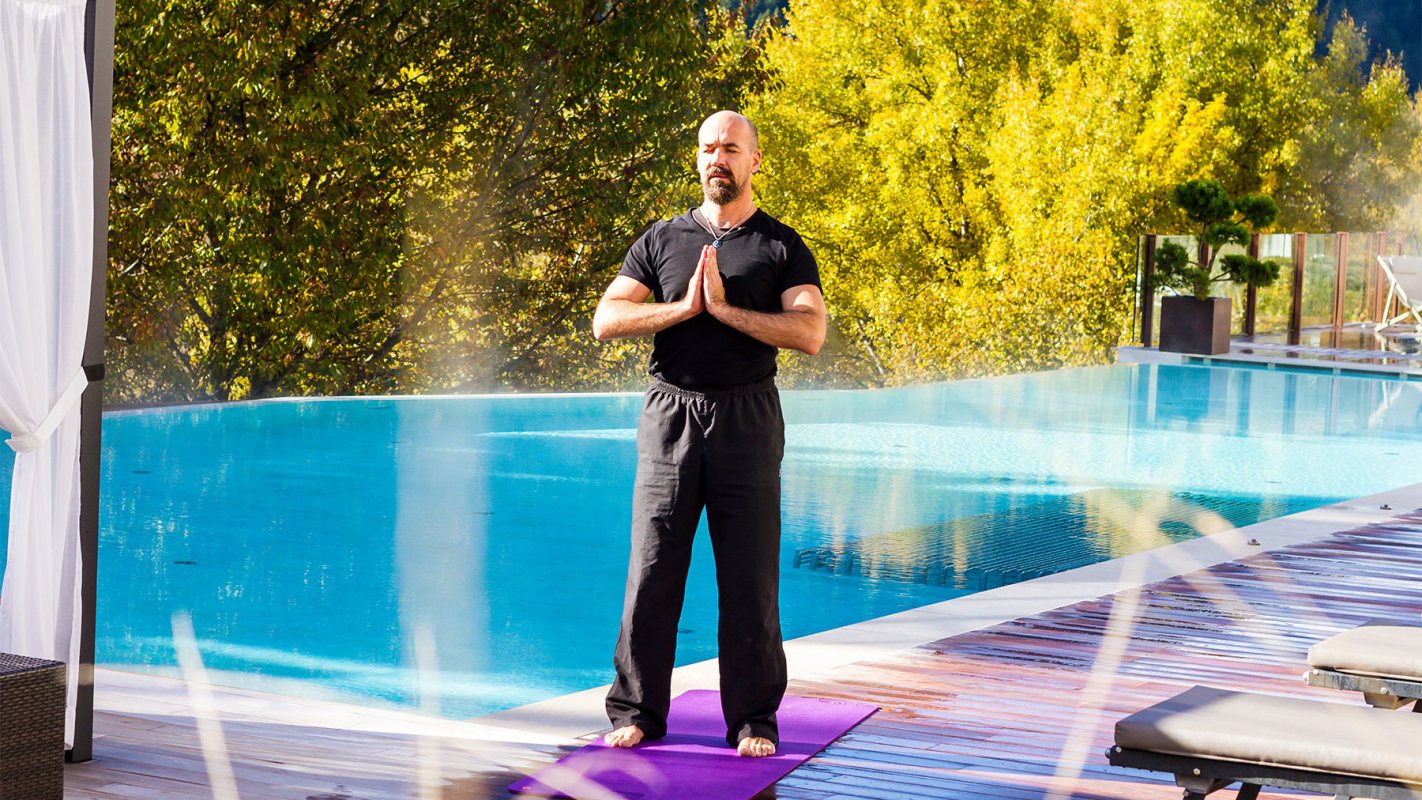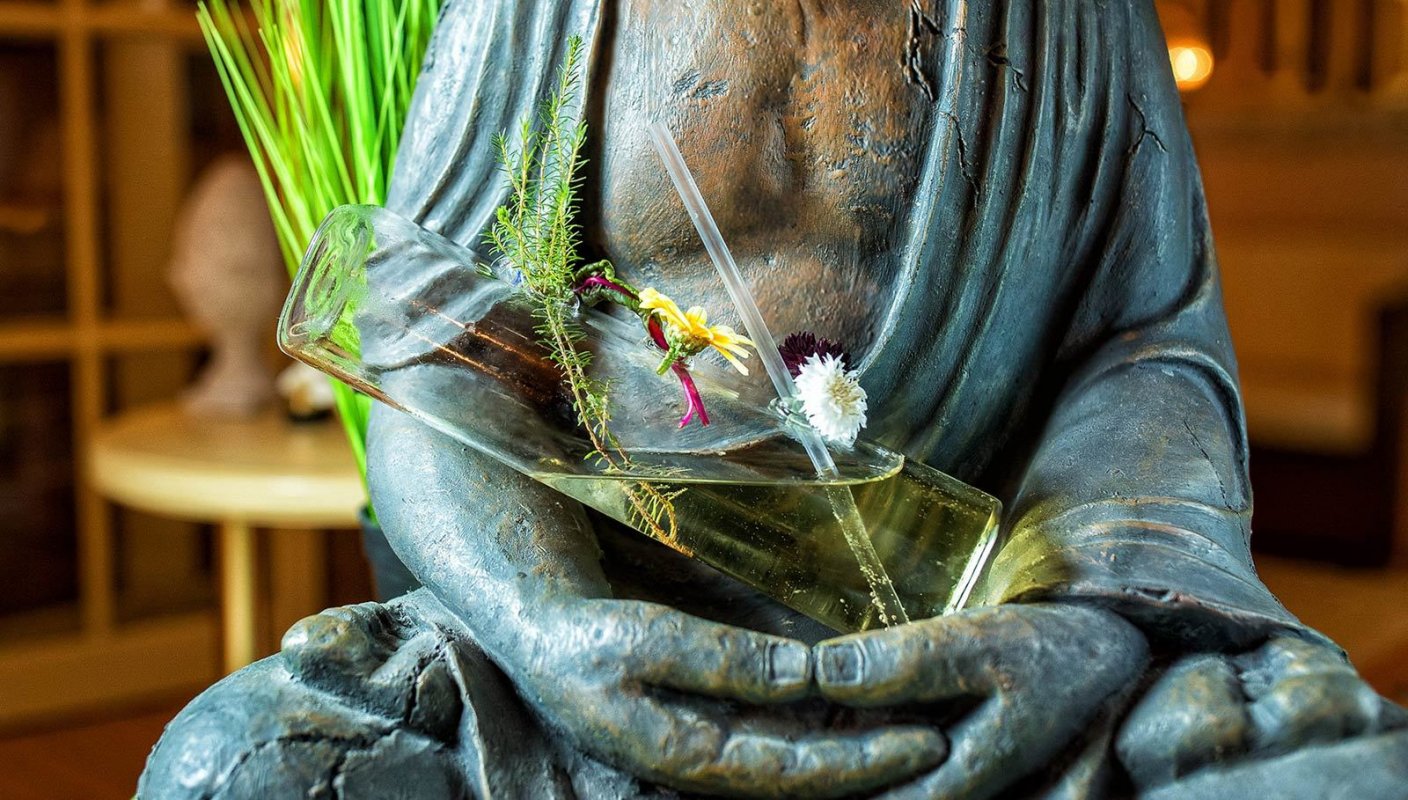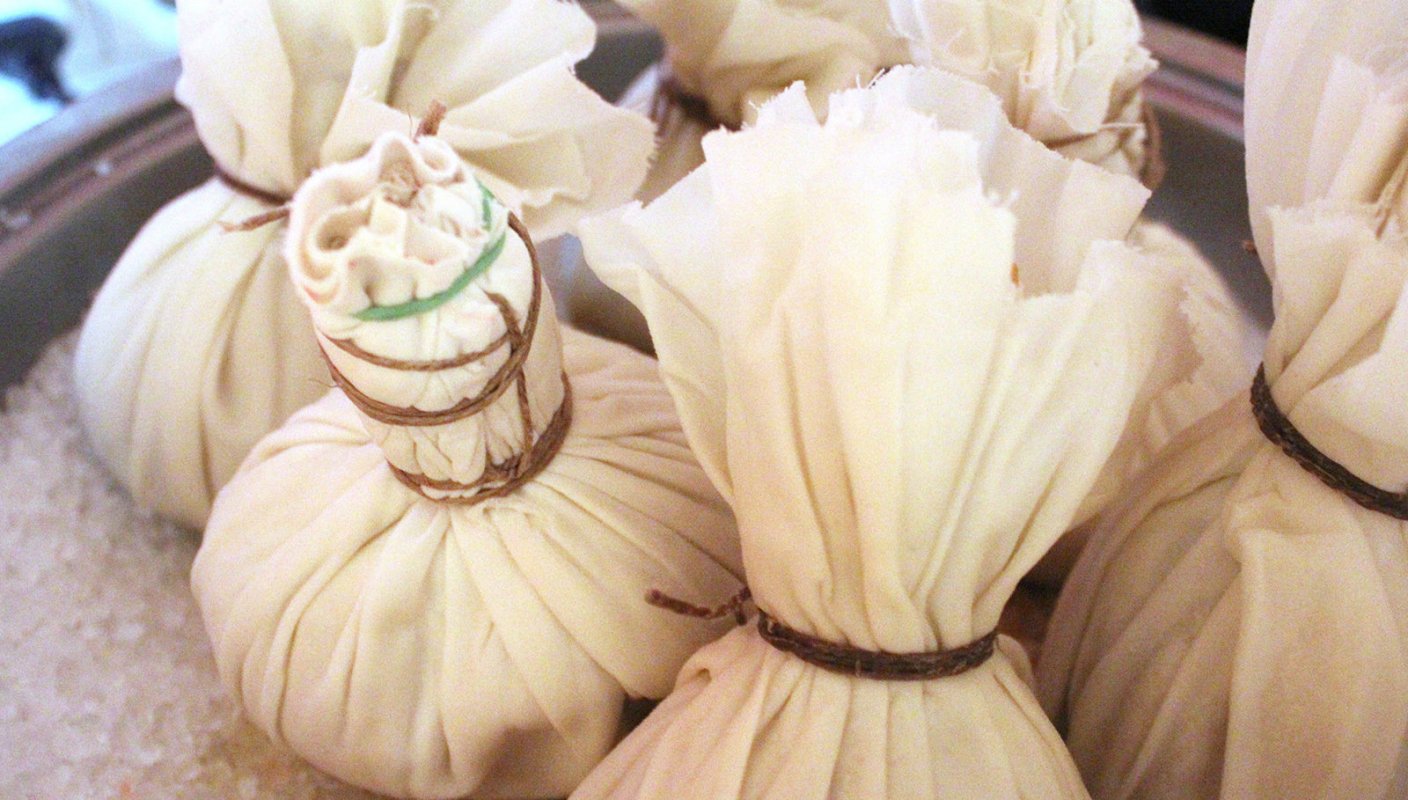From Ayurveda to Vita Sana
Eight questions for Ayurveda specialist Claudio Setti
To what extent does Ayurveda form part of the Setti method?
The Setti method is a holistic concept consisting of a very wide range of massage and body treatment techniques, breathing techniques, tai yoga - a blend of tai chi and yoga - and careful dietary supervision. Ayurveda is thus a holistic philosophy that forms part of our offer - indeed, it is fundamental to it.
Along with chef Theodor Falser, and working closely with Dr Piergiorgio Chiereghin, we have developed an all-round programme that involves body treatments, balanced nutrition and the selective use of herbal products. Carmen Kohler has lent us her confidence and support in order to create the necessary framework.
Yin and Yang in the midst of the Rosengarten range?
Absolutely. We combine Eastern philosophies with allopathic health practices: I see Ayurveda - the “knowledge of life” - as the mother, the feminine approach to healthiness; while TCM - traditional Chinese medicine - and especially tuina, the Chinese manual treatment technique, I see as the masculine, fatherly approach to working on the body. We combine individual elements into a holistic concept of health, always in harmony with the characteristics of the South Tyrolean seasons. Yes, you could in fact call it the Yin and Yang of Western medicine.
How do we determine our own needs?
Often guests come to us with very specific ideas. After an initial discussion of their case history, however, it frequently turns out that very different issues are to be tackled. For example, “becoming basic”, which is fundamental for a healthy body. Sometimes emotional issues surface that in everyday life are otherwise concealed. If the guest becomes conscious of these, whether via our treatments or even through little hints or questions, a perception process commences that we can then follow on numerous levels, closely observing and empathising.
Engaging with people... How important is the initial discussion?
Very important! When we start a cycle of professional treatment, such as an Ayurvedic cure or a base week in combination with therapeutic treatments, the person must be considered as a whole. In future each room will contain a preparation schedule that will shorten the time it takes us to determine the guest’s state of health. The initial consultation will then analyse posture, language – in fact, the overall appearance of each person. From this we can infer vital information that is relevant to professional care. An ocular diagnosis can also detect possible physical weaknesses.
Reading from the eyes?
The eyes can tell us a great deal! Diagnosis of the iris during initial assessment, for example, may show tiny spots or deposits on the tissue structure of the iris, indicating excessive consumption of carbohydrates or fats. We then develop a nutrition plan based on the information we initially gather and on the eye diagnosis: lots of vegetables, herbs, cleansing spices, no garlic and as little salt as possible. This programme is accompanied by herbal teas and a ginger broth.
The Setti method is a holistic concept consisting of a very wide range of massage and body treatment techniques, breathing techniques, tai yoga - a blend of tai chi and yoga - and careful dietary supervision. Ayurveda is thus a holistic philosophy that forms part of our offer - indeed, it is fundamental to it.
Along with chef Theodor Falser, and working closely with Dr Piergiorgio Chiereghin, we have developed an all-round programme that involves body treatments, balanced nutrition and the selective use of herbal products. Carmen Kohler has lent us her confidence and support in order to create the necessary framework.
Yin and Yang in the midst of the Rosengarten range?
Absolutely. We combine Eastern philosophies with allopathic health practices: I see Ayurveda - the “knowledge of life” - as the mother, the feminine approach to healthiness; while TCM - traditional Chinese medicine - and especially tuina, the Chinese manual treatment technique, I see as the masculine, fatherly approach to working on the body. We combine individual elements into a holistic concept of health, always in harmony with the characteristics of the South Tyrolean seasons. Yes, you could in fact call it the Yin and Yang of Western medicine.
How do we determine our own needs?
Often guests come to us with very specific ideas. After an initial discussion of their case history, however, it frequently turns out that very different issues are to be tackled. For example, “becoming basic”, which is fundamental for a healthy body. Sometimes emotional issues surface that in everyday life are otherwise concealed. If the guest becomes conscious of these, whether via our treatments or even through little hints or questions, a perception process commences that we can then follow on numerous levels, closely observing and empathising.
Engaging with people... How important is the initial discussion?
Very important! When we start a cycle of professional treatment, such as an Ayurvedic cure or a base week in combination with therapeutic treatments, the person must be considered as a whole. In future each room will contain a preparation schedule that will shorten the time it takes us to determine the guest’s state of health. The initial consultation will then analyse posture, language – in fact, the overall appearance of each person. From this we can infer vital information that is relevant to professional care. An ocular diagnosis can also detect possible physical weaknesses.
Reading from the eyes?
The eyes can tell us a great deal! Diagnosis of the iris during initial assessment, for example, may show tiny spots or deposits on the tissue structure of the iris, indicating excessive consumption of carbohydrates or fats. We then develop a nutrition plan based on the information we initially gather and on the eye diagnosis: lots of vegetables, herbs, cleansing spices, no garlic and as little salt as possible. This programme is accompanied by herbal teas and a ginger broth.
Which special Ayurvedic treatments do you offer?
We work for example with herbal pouches that instigate a detoxifying process, thanks to the use of melissa, hawthorn or green tea. We use warm sesame, almond and coconut oils to accompany the massage process, activating acupressure points and meridian flows. This releases energy imbalances and can help establish a new and refreshing balance. In other words, the energy is released and guided through the body. The various Ayurvedic treatment cycles, such as the panchakarma treatment, also make use of forehead oleation - a warm oil thread that flows onto and activates the sixth chakra.
Is every guest individual?
Of course. Everyone combines in themselves Vata, Pitta and Kapha, the three types of dosha. This term comes from the Sanskrit and indicates the qualities that define the individual mental as well as physical constitutions and thus affect the entire organism. For most people, one of the three “fires” is dominant. Our goal is to re-establish the harmony of the doshas, thus revitalising the body and also treating the whole human system in a preventive manner.
The treatment programme, developed individually for each guest, is built up in several steps, with the various techniques employed without methodological constraint. From bioenergetics to osteopathic grips, or special Ayurvedic treatments – it is the individuality of the guest, their type combination, that counts here.
Does working on the body also mean working on the emotional body?
While training as a tuina massage therapist I was taught that 80% of physical ailments are due to emotional causes. At the time I was very sceptical – but today, after so many years of professional experience, I would say it is considerably more! It is important to say that our therapeutic treatments are part of a greater whole, a complete health system. And what still matters in our treatments is this: “Di godersi la vita” – “To enjoy life to the full”.
We work for example with herbal pouches that instigate a detoxifying process, thanks to the use of melissa, hawthorn or green tea. We use warm sesame, almond and coconut oils to accompany the massage process, activating acupressure points and meridian flows. This releases energy imbalances and can help establish a new and refreshing balance. In other words, the energy is released and guided through the body. The various Ayurvedic treatment cycles, such as the panchakarma treatment, also make use of forehead oleation - a warm oil thread that flows onto and activates the sixth chakra.
Is every guest individual?
Of course. Everyone combines in themselves Vata, Pitta and Kapha, the three types of dosha. This term comes from the Sanskrit and indicates the qualities that define the individual mental as well as physical constitutions and thus affect the entire organism. For most people, one of the three “fires” is dominant. Our goal is to re-establish the harmony of the doshas, thus revitalising the body and also treating the whole human system in a preventive manner.
The treatment programme, developed individually for each guest, is built up in several steps, with the various techniques employed without methodological constraint. From bioenergetics to osteopathic grips, or special Ayurvedic treatments – it is the individuality of the guest, their type combination, that counts here.
Does working on the body also mean working on the emotional body?
While training as a tuina massage therapist I was taught that 80% of physical ailments are due to emotional causes. At the time I was very sceptical – but today, after so many years of professional experience, I would say it is considerably more! It is important to say that our therapeutic treatments are part of a greater whole, a complete health system. And what still matters in our treatments is this: “Di godersi la vita” – “To enjoy life to the full”.


